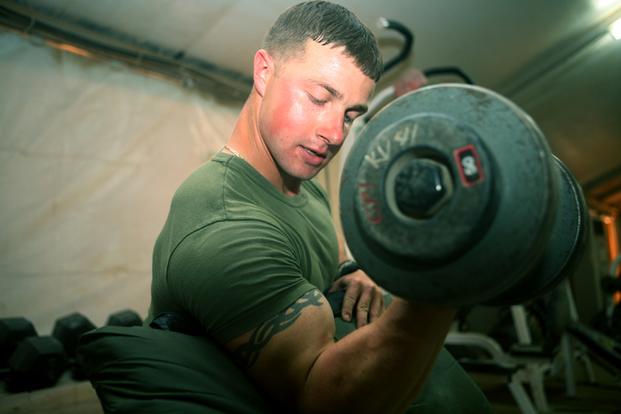When making recommendations to people who aspire to military service, there are several areas of information that I need to personalize a program recommendation. For instance, I need to know a candidate's athletic history, current fitness level, strengths and weaknesses, as well as the branch of service and job they desire. All of these factors contribute to a decision on how to train.
Here is a question from a powerlifting former football player who was confused when I recommended that he needed to drop the weights and work on muscle stamina and endurance.
Hey Stew. I was curious about some of your recommendations. When preparing for military service, there are some people you recommend adding lifting and some you do not and suggest that they just focus on calisthenics and cardio. Why is that? Shouldn't we all be getting stronger on this journey in preparing for fitness tests and advanced training? Thanks Justin
Justin, I get it. I also grew up as a weightlifter, so being told not to do it was difficult to swallow after the activity molded the first 10 years of my athletic history. However, in a world that focuses on strength, power, speed and agility, the typical power athlete lacks significant ability in cardiovascular aerobic endurance and high-repetition muscle stamina.
Focusing on your weaknesses is the recommendation I give to everyone, as your weaknesses will be exposed on the first day of testing and during any military training evolution. Your weakness is running, swimming and calisthenics. You will never get accepted into the training unless you ace a fitness test that involves all of the above. Your workouts should be solely focused on these skills for at least a 12-week cycle.
As a longtime power athlete, you can actually not lift for more than a year and replace all training with heavy calisthenics and a progressive run, swim, ruck plan. You will still be stronger than most people in the military training program you enter.
If you ever wanted to get back to previous one-rep maxes, it will literally only take a six- to eight-week cycle of lifting again. However, if you are seeking a challenging job within the military branches (specifically special ops), you will need to keep a tight focus on your endurance and muscle stamina. These will be a weakness that you will potentially have to work on for years while you prepare and advance through the military training pipeline.
Remember the goal is to reduce weaknesses in all elements of fitness: strength, power, speed, agility, muscle stamina, endurance (run, ruck, swim), flexibility, mobility and grip. Neglect any of these and you will feel it. These make up the basis of being a well-rounded tactical athlete. It is not all about lifting.
When to Add Lifting and How
There is a way to add lifting that will not interrupt your endurance and focus on muscle stamina -- and perhaps even enhance it. For those who have worked hard to gain strength and muscle mass (former endurance athletes), I will primarily offer this advice to them as it is easy for them to "lose their gains" if they are not addressing the needed caloric input during their training cycles, regardless of focus.
We do this with a block periodization model. If focused on calisthenics and cardio gains for typical fitness tests and building an aerobic and anaerobic base of endurance progression (adding miles each week) and a muscle stamina foundation, it is fine to take a week off from the high miles and reps to do a lift week. We do these running deload and lifting weeks every fourth or fifth week of a training cycle.
However, if you are an endurance athlete who has only run or swam for your entire athletic history, reducing the total volume of cardio and adding in a combination of calisthenics and weights would be a logical start to their transition out of athletics and into preparation for military tactical athletics.
The answer really depends on a person's athletic history. The sports and training of our past drive our current strengths and weaknesses. We assess these strengths and weaknesses to confirm the results and, from there, determine whether an athlete needs to be placed into the weight room or kicked out of the weight room and onto the track or swimming pool.
Once a student has sufficiently transformed all weaknesses into strengths while maintaining their current strengths, they are now considered a well-rounded tactical athlete ready for any training the military can send them. At this point, the training programs can change since maintaining all the elements of fitness is much easier than trying to improve one or two while maintaining other elements of fitness.
-- Stew Smith is a former Navy SEAL and fitness author certified as a strength and conditioning specialist (CSCS) with the National Strength and Conditioning Association. Visit his Fitness eBook store if you're looking to start a workout program to create a healthy lifestyle. Send your fitness questions to stew@stewsmith.com.
Want to Learn More About Military Life?
Whether you're thinking of joining the military, looking for fitness and basic training tips, or keeping up with military life and benefits, Military.com has you covered. Subscribe to Military.com to have military news, updates and resources delivered directly to your inbox.


















